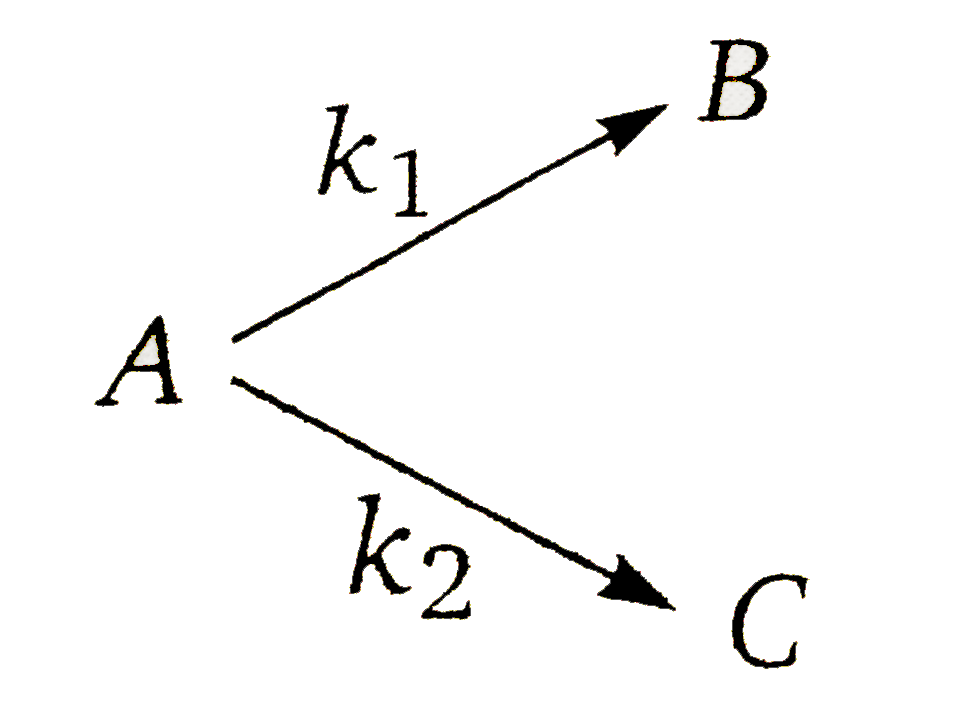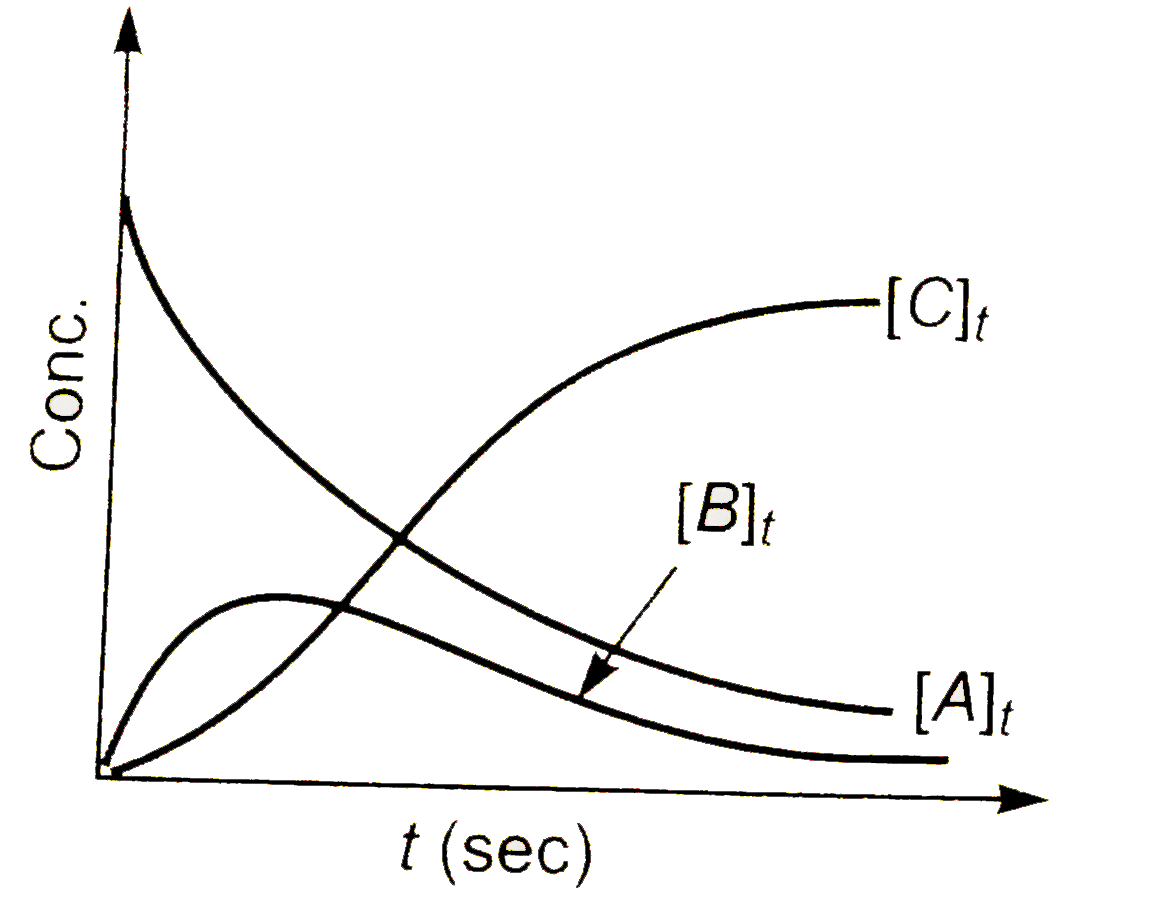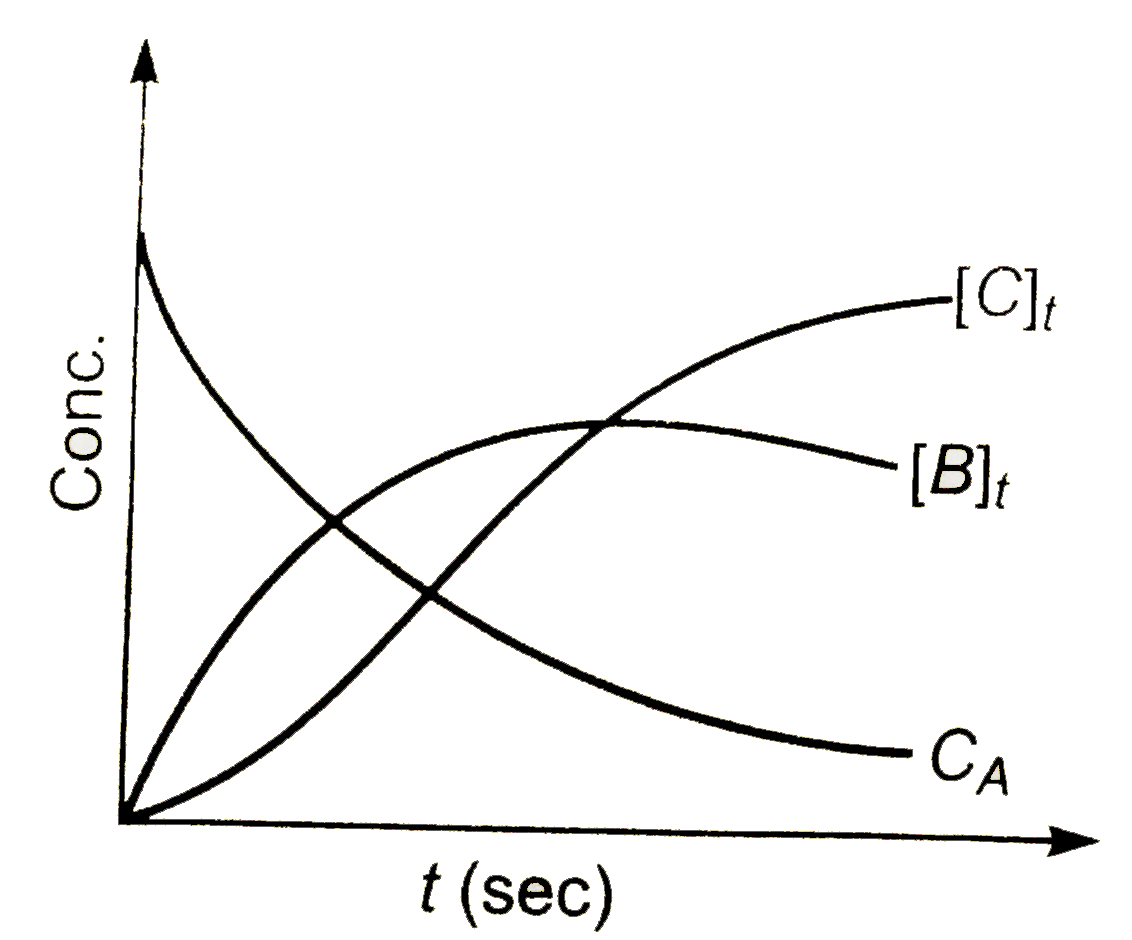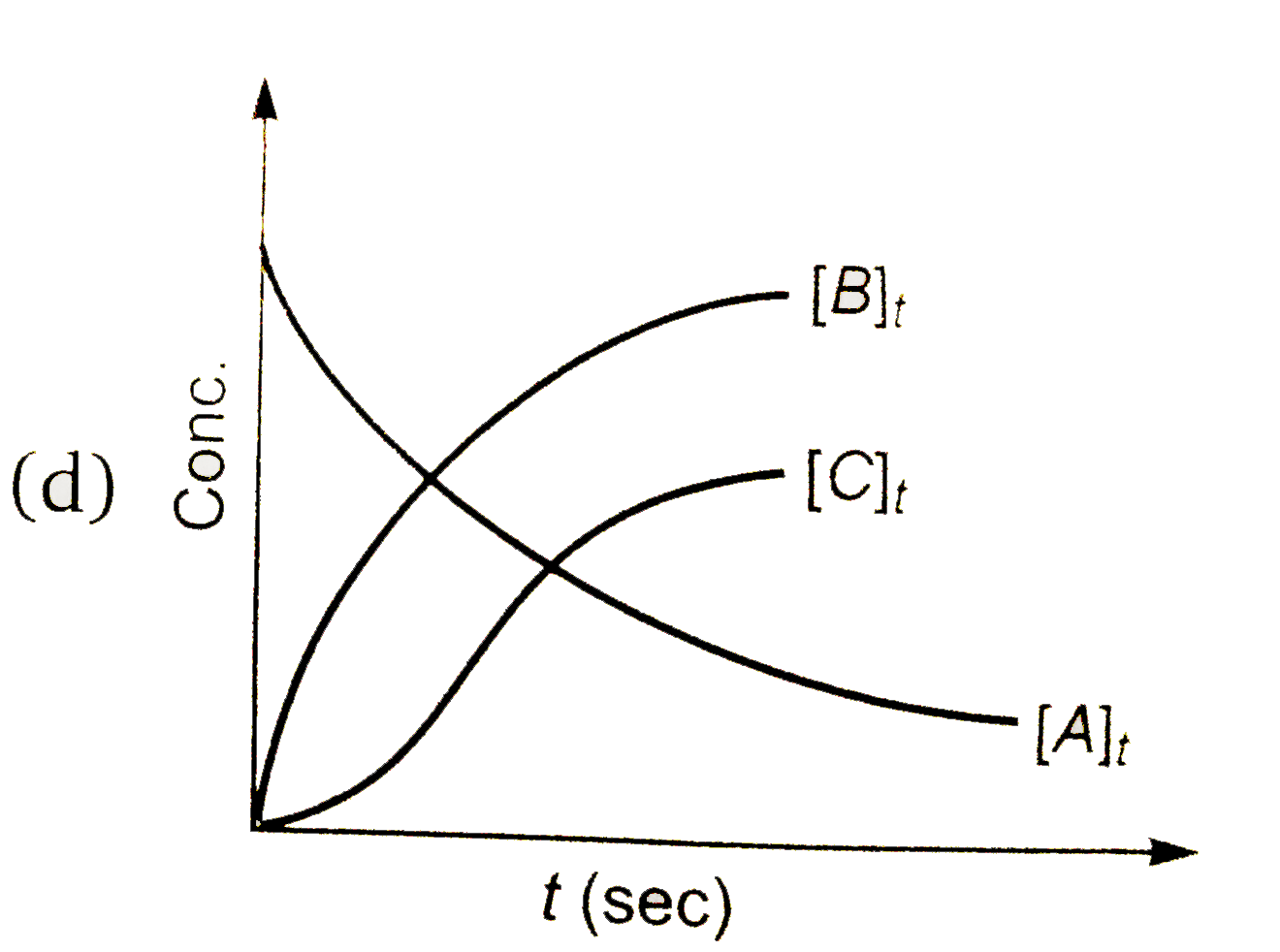Consider the reaction.

The rate constant for two parallel reactions were found to be 10−2dm−2mol−1s−1 and 4×10−2dm−3mol−1s−1 . If the corresponding energies of activation of the parallel reaction are 100 and 120 kJ/mol respectively, what is the net energy of activation (Ea) of A Solution in Punjabi
100 kJ/mol
120 kJ/mol
116 kJ/mol
220 kJ/mol
The correct Answer is:C
Step by step video & image solution for Consider the reaction. The rate constant for two parallel reactions were found to be 10^(-2) dm^(-2)mol^(-1)s^(-1) and 4xx10^(-2)dm^(-3)mol^(-1)s^(-1) . If the corresponding energies of activation of the parallel reaction are 100 and 120 kJ/mol respectively, what is the net energy of activation (E_(a)) of A by Chemistry experts to help you in doubts & scoring excellent marks in Class 12 exams.
Updated on:21/07/2023Topper's Solved these Questions
- CHEMICAL KINETIC & NUCLEAR CHEMISTRYBook:NARENDRA AWASTHIChapter:CHEMICAL KINETIC & NUCLEAR CHEMISTRYExercise:Level 2 (Q.33 To Q.35)
Explore 2 Videos
- CHEMICAL KINETIC & NUCLEAR CHEMISTRYBook:NARENDRA AWASTHIChapter:CHEMICAL KINETIC & NUCLEAR CHEMISTRYExercise:Level 3 - Passage
Explore 1 Video
- CHEMICAL KINETIC & NUCLEAR CHEMISTRYBook:NARENDRA AWASTHIChapter:CHEMICAL KINETIC & NUCLEAR CHEMISTRYExercise:Level 2
Explore 1 Video
- SURFACE CHEMISTRYBook:NARENDRA AWASTHIChapter:SURFACE CHEMISTRYExercise:Level -2
Explore 1 Video
Similar Questions
In a sample of wood, the reading of a counter is 32 dpm and in a fresh sample of tree it is 122dpm . Due to error counter gives the reading 2 dpm in absence of .14C . Half life of .14C is 5770 years .
The approximate age (in years) of wood sample is :
View SolutionTwo consecutive irreversible first order reactions can be represented by
Ak1−−→Bk2−−→C
The rate equation for A is readily interated to obtain
[A]t=[A]0.e−k1t , and [B]t=k1[A]0k2−k1[e−k1(t)−e−k2(t)]
When k1=1s−1 and k2=500s−1 , select most appropriate graph
a) b)
b) 
c) d)
d) 
View SolutionThe forward rate constant for the elementary reversible gaseous reaction
C2H6<⇒2CH3is1.57×10−3s−1at100K
What is the rate constant for the backward reaction at this temperature if 10−4 moles of CH3 and 10 moles of C2H6 are present in a 10 litre vessel at equilibrium .
a) 1.57×109Lmole−1s−1
b) 1.57×1010Lmole−1s−1
c) 1.57×1011Lmole−1s−1
d) 1.57×107Lmole−1s−1
View Solutionfor the graph below, select correct order of temperture ?

View SolutionIn a first order reaction, the concentration of the reactant decreases form 800mol dm−3 to 50mol dm−3 in 2×104s. The rate constant of the reaction (in s−1) is
View SolutionConsider the reaction.

The rate constant for two parallel reactions were found to be 10−2dm−2mol−1s−1 and 4×10−2dm−3mol−1s−1 . If the corresponding energies of activation of the parallel reaction are 100 and 120 kJ/mol respectively, what is the net energy of activation (Ea) of A
View SolutionThe substance undergoes first order decomposition.The decomposition follows two parallel first order reactons as : K_1=10^(-2) sec^(-1) and K_2=10^(-2)sec^(-1) If the corresponding activation energies of parallel reaction are 100 and 120 kJ "mol"^(-1) then the net activation energy of A is/are:
View SolutionThe rate constant for two parallel reactions were found to be 1.0xx10^(-2)dm^(3)mol^(-1)and 3.0xx10^(-2)dm^(3)mol^(-1)s^(-1) . If the corresponding energies of activation of the correspoing energies of activation of the parallel reaction are 60.0 Kj mol^(-1) and 70.0 KJ mol^(-1) respectively ,what is the apparent overall energy of activation ?
View SolutionThe unit of rate constant of a reaction is (mol)−1/2.(dm)3/2.s−1 . Determine the order of the reaction.
View SolutionThe rate constant for two parallel reactions were found reactions were found to be 1.0 xx 10^(–2)" dm"^(3)" mol"^(-1) s^(–1) and 3.0 xx 10^(–2)" dm"^(3)" mol"^(–1) s^(–1) . If the corresponding energies of activation of the parallel reactions are 60.0" kJ mol"^(–1) and 70.0" kJ mol"^(–1) respectively, what is the apparent overall energy of activation ?
View SolutionThe rate constants for a reaction at 400 K and 500 K are 2 . 60 xx 10^(-5) s^(-1) and 2.60 xx 10^(-3) s^(-1) respectively. The activation energy of the reaction in kJ mol^(-1) is
View SolutionFor a chemical raction A→B the rate of the reaction is 2×10−3 mol dm−3s−1, when the initial concentration is 0.05 mol dm−3. The rate of the same reaction is 1.6×10−2 mol dm−3s−1 when the initial concentration is 0.1 mol dm−3. The order of the reaction is
View SolutionI2 के साथ H2 की अभिक्रिया के लिए दर नियतांक 327∘C पर 2.5×10−4dm3mol−1s−1 तथा 527∘C पर 1.0dm3mol−1s−1 है |
अभिक्रिया की सक्रियण ऊर्जा (kJmol−1में)
होगी (R=8.314Jk−1mol−1)
View SolutionConsider the reaction. The rate constant for two parallel reactions were found to be 10^(-2) dm^(-2)mol^(-1)s^(-1) and 4xx10^(-2)dm^(-3)mol^(-1)s^(-1) . If the corresponding energies of activation of the parallel reaction are 100 and 120 kJ/mol respectively, what is the net energy of activation (E_(a)) of A
View SolutionIn a first order reaction, the concentration of the reactant decreases form 800mol dm−3 to 50mol dm−3 in 2×104s. The rate constant of the reaction (in s−1) is
View Solution